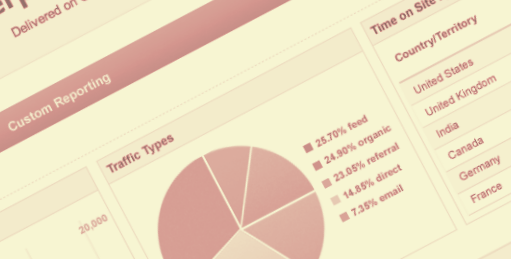Reading Time: 3 minutes
Table of Contents
Google Analytics is amazing even straight out of the box. It’s a brilliant toolset, with the free version being quite sufficient for the vast majority of websites. Yet it is incredible just how many people really don’t get anywhere near as much data from Analytics as they could be. There are a host of features that are hugely under used by marketers and business owners alike, in my experience. Here are 3 features you should be making the most of (but probably aren’t):
3 Google Analytics Features that every marketer should use

License: Image author owned
IP Exclusion Filters
I’ve come across countless Analytics accounts where the user isn’t filtering their own traffic. As Google Analytics is, at present, very visit centric (i.e. the focus is more on visits rather than unique visitors in many way) even a quick check a day by one or two people could skew the data that Analytics is providing.
The simple solution to this is to have a Google Analytics profile that filters traffic from certain IP addresses and this can be done really easily by going to admin, in Analytics, selecting the profile and going to ‘filter.’ IP exclusions are one of the existing pre-defined filters available in Analytics.
It’s best practice to always have at least one raw data profile with no filters applied as well.
Custom Segments
Out of the box, Google lets you segment the data within an Analytics profile so that it shows up just mobile (including tablet), just PPC, just organic and a host of other options. Many people I encounter are reasonably savvy in the use of the segments. But very few have ever really tried creating their own, despite the fact it’s reasonably straightforward for anyone with a basic understanding of Analytics.
Some custom filters you might want to create and find useful include:
- Smartphone only traffic, given that Google’s mobile segment out of the box includes tablet data
- Brand organic traffic, where it shows only organic traffic where someone’s search included your brand terms in it
- Non-brand organic traffic, where your brand searches are excluded from the traffic
There are a huge number of possible filters you could create in order to tailor your data view based on your marketing campaigns and your website.
The Attribution Modelling Tool
Now, this is a relatively new one. Google tells us that half of online sales do not occur on the user’s first visit. In other words, the user will visit a site once, leave without making a purchase and then come back (often by another channel at another time) and make the purchase on as subsequent visit. Out of the box, Google will attribute a sale to the last non-direct click. So, let’s consider the following common scenario:
- A user searches a generic term, sees your PPC ad and clicks on it
- The user browses your site for a while but doesn’t make a purchase and simply leaves
- The following day, the users types your brand name in, clicks on your organic result and comes back to your website
- On this visit, the user makes a purchase
By default, Google will attribute this sale to organic (brand organic, if you are separating brand and non-brand). But the reality is that this user would possibly never have found your website were it not for your generic keyword targeted PPC ad. Yet, out of the box, this channel gets no credit.
Google recognised this was an issue and, in the first instance, provided us with multi-channel funnels so we could see people’s journeys like that. Google also gave premium Analytics users access to a great attribution modelling tool, that lets users decide on the best means of attributing sales on multi interaction purchases. This tool was made available to free users at the end of last year. It’s not there by default yet, but you can apply for access at:-
Apply For Attribution Modeling Tool Whitelist
This is a hugely powerful tool for marketers who want to understand their full user journey from brand discovery through to sale.
So start playing around with some of these other features, make the most of your data and turn this extra information into actionable insight.
Our guest author for this post on Google Analytics is Scott Hague, Managing Director of UK company, IntegratedChange.net. Scott’s active on a number of social media channels, including Google Plus.
Leave a Reply